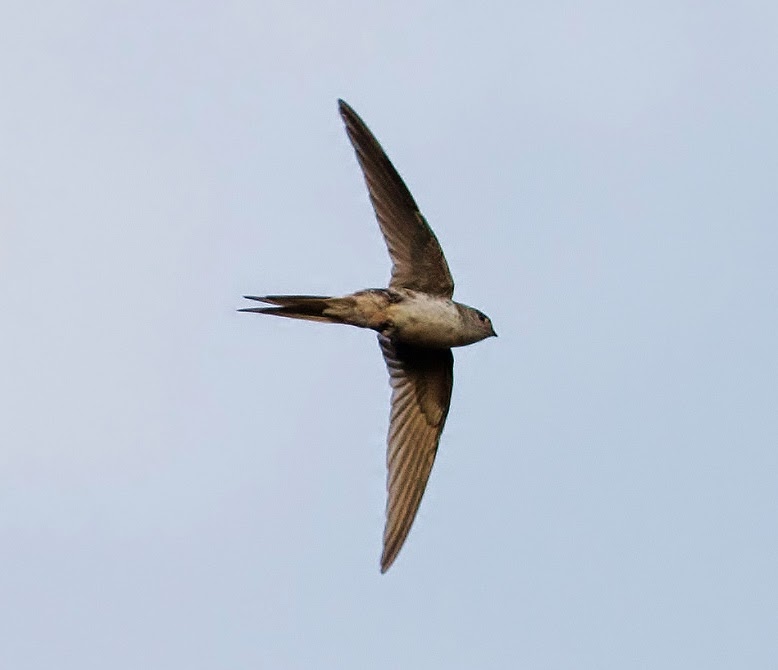Nyctiprogne leucopyga
 |
| Photo by Anselmo d'Affonseca (Internet Bird Collection) |
Common name:
band-tailed nighthawk (en); bacurau-de-cauda-barrada (pt); engoulevent leucopyge (fr); añapero colibandeado (es); bindenschwanz-nachtschwalbe (de)
Taxonomy:
Order Caprimulgiformes
Family Caprimulgidae
Range:
This species is found in Venezuela and eastern Colombia, and through north-western and central Brazil into northern Bolivia, northern Paraguay and French Guyana.
Size:
These birds are 16-20 cm long and weigh 23-26 g.
Habitat:
The band-tailed nighthawk is mostly found in moist tropical forests and moist savannas, including gallery forests and forest edges. They also use inland wetlands such as marshes, swamps and rivers. They are present from sea level up to an altitude of 500 m.
Diet:
They hunt insects such as beetles, bugs and ants.
Breeding:
Band-tailed nighthawks possibly breed in August-March. They nest on the ground, on open soil covered in dead leaves, and the female lays 1-2 whitish or creamy eggs with brown and grey spots or blotches. The eggs are incubated by both parents for 19-21 days. The chicks are fed by both parents and may move small distances away from the nest within 24 h of hatching, fledging 20-21 days after hatching. Each pair may raise 1-2 clutches per season and the female starts incubating the second brood while the male is still taking care of the first.
Conservation:
IUCN status - LC (Least Concern)
This species has a very large breeding range and is described as fairly common but patchily distributed. The band-tailed nighthawk is suspected to lose 22-26% of suitable habitat within its range over the next 15 years based on a model of Amazonian deforestation, so a small decline is expected in the near future.

















